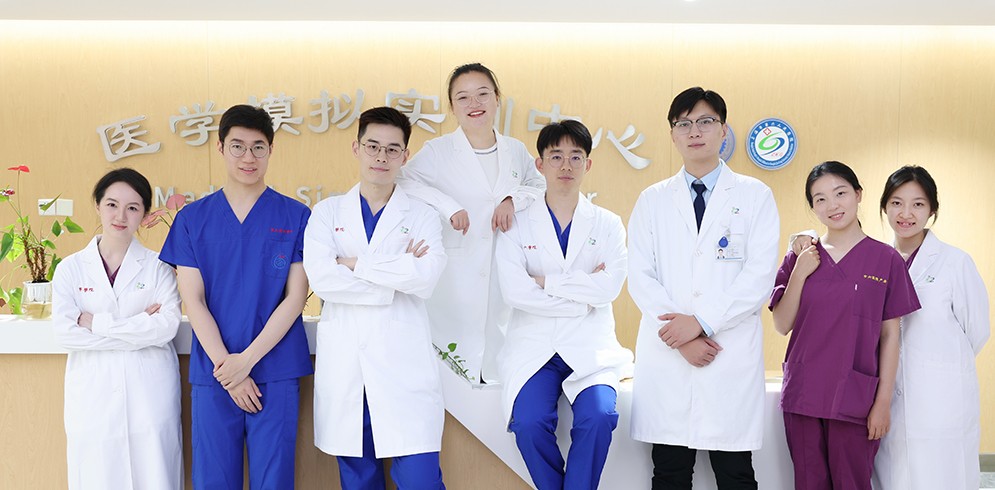Search

On July 24, 2024, the third “Tracing Roots, Exploring Special Cases” clinical case discussion took place in the National Center for Orthopaedics. Organized by the Department of Infectious Diseases, this event aimed to ignite enthusiasm for practical learning and innovate clinical teaching methods. Nearly 200 participants joined offline, while over 2,000 viewed the event online. As part of the admission education curriculum for the 2024 class of residents, the session received widespread acclaim from new trainees.
The case discussion, titled “Unmasking the Mystery: Diagnosing Persistent Bone Pain,” revolved around a complex case involving persistent and unexplained bone pain. Zhao Tingting, a resident from Internal Medicine, and Zhang Yi, Deputy Chief Physician from the Department of Infectious Diseases, presented the case. Vice Dean Li Ping of the Clinical Medical School presided over the session, with Chief Physician Chen Xiaohua from the Department of Infectious Diseases moderating the discussion.
An esteemed panel of experts enriched the discussion:
- Tang Zhenghao, Chief Physician, Department of Infectious Diseases
- Lian Xiaofeng, Chief Physician, Department of Orthopedics
- Gu Xiaohua, Deputy Chief Physician, Department of Respiratory Medicine
- Sun Zhenkui, Deputy Chief Physician, Department of Nuclear Medicine
- Wang Yonggang, Deputy Chief Physician, Department of Oncology
- Jiao Qiong, Attending Physician, Department of Pathology
The patient’s condition, eventually diagnosed as lung adenocarcinoma with concurrent pulmonary aspergillus and tuberculosis infections, was meticulously analyzed. Zhao Tingting detailed the case history, examination results, and diagnostic challenges. Chen Xiaohua guided discussions on auxiliary and specialist examinations, differential diagnoses, and disease confirmation. The session incorporated multidisciplinary team (MDT) consultations for a comprehensive analysis. Contributions from Sun Zhenkui and Jiao Qiong provided critical insights into imaging and pathology. Gu Xiaohua and Wang Yonggang offered valuable perspectives on clinical symptoms, treatment approaches, prognosis, and follow-up care.


Under the moderator’s guidance, participants explored the etiology, pathology, diagnosis, treatment, and prognosis layer by layer. This collaborative effort exemplified the power of multidisciplinary cooperation in solving complex medical cases. The session was marked by a vibrant academic atmosphere and active engagement.
Chen Xiaohua concluded the session by highlighting its significance in fostering cross-disciplinary collaboration and advancing diagnostic acumen. He praised the session for combining professional rigor with a commitment to medical humanism, underscoring the “people-first” ethos of healthcare.
The success of this case discussion reinforces the hospital’s dedication to institutionalizing clinical case discussions. By fostering an academic culture of inquiry and collaboration, the hospital aims to enhance diagnostic and treatment capabilities, promote interdisciplinary learning, and support high-quality development in medical education.

Latest News
- Tracing the Root, Tackling the Rare: The Fourth Session of the 2025 Clinical Case Discussion Successfully Held11-04
- Intensive Specialized SP Practicum Solidify the Foundation of Clinical Education09-20
- Tracing the Root, Tackling the Rare: Third Session of the 2025 Clinical Case Discussion Successfully Held by Clinical Medical School and Medical Affairs Office08-06
- Tracing the Root, Tackling the Rare: Second Clinical Case Discussion of 2025 Held Successfully07-10
- Tracing the Root, Tackling the Rare: First Clinical Case Discussion of 2025 Held Successfully03-19
- Enhancing Excellence in Residency Training: Specialized Capability Development for Core Faculty12-30
- Supervision Guides a New Journey, Steadfast Actions Ensure Quality Advancement12-06
- Strengthening Residency Training Through Collaboration: 11-20




